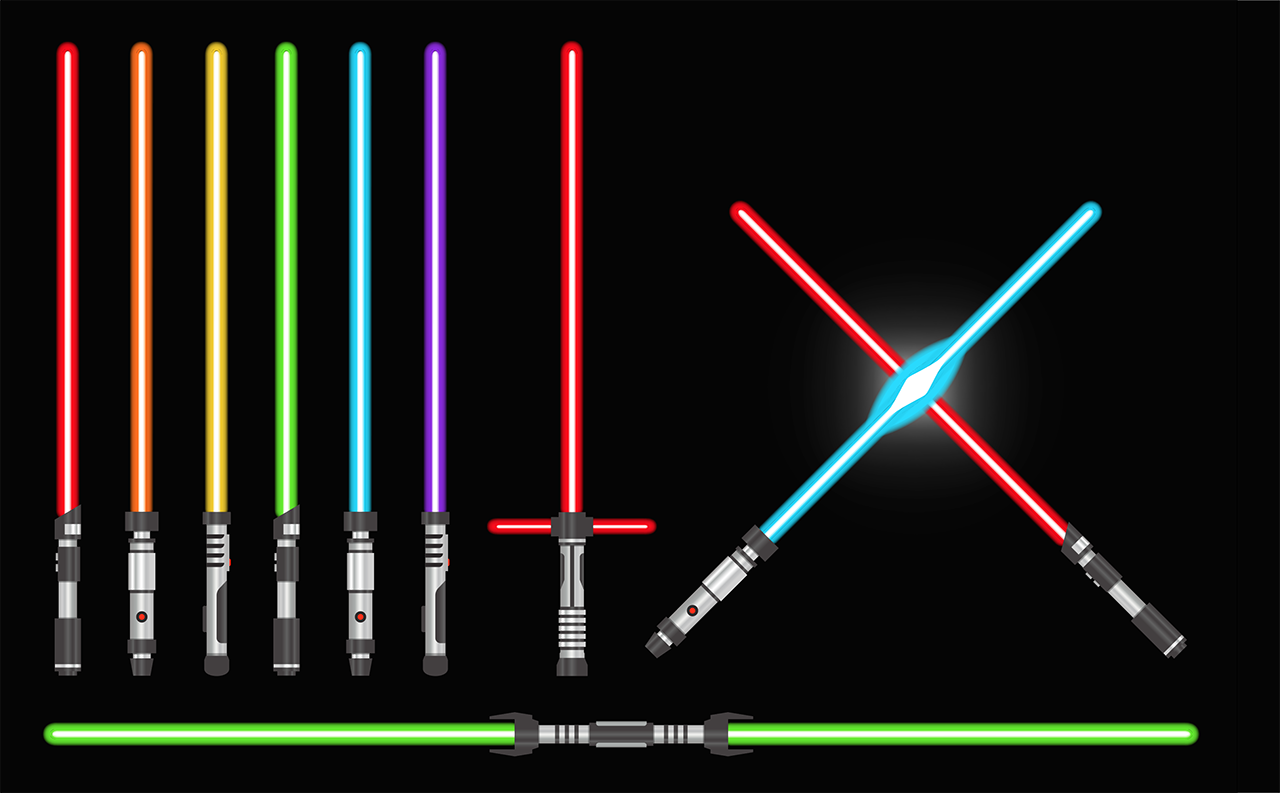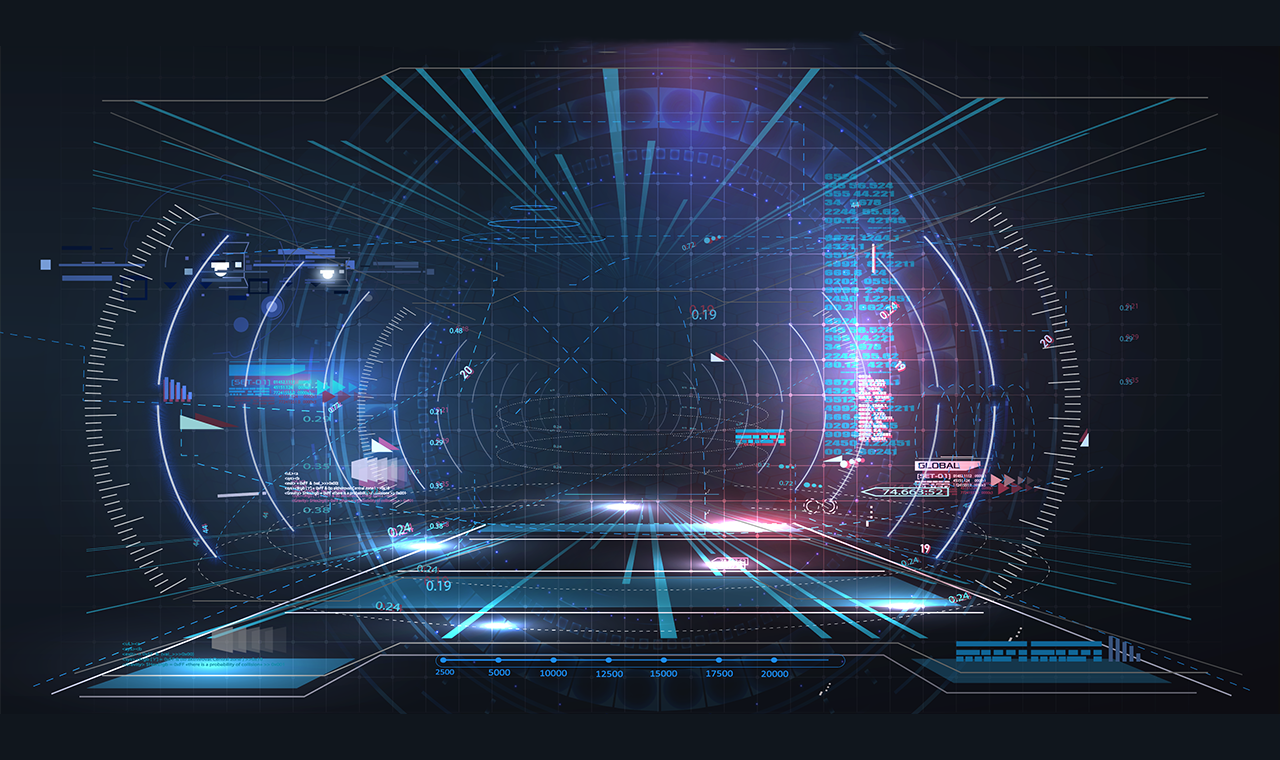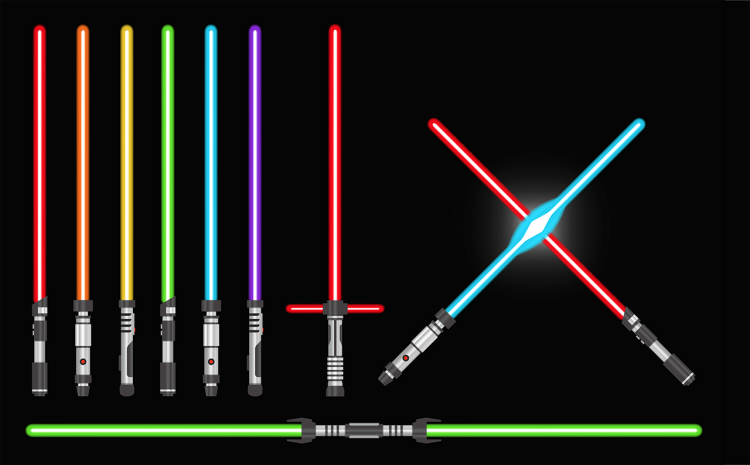SPATIAL COMPUTING MARTIJN ASLANDER
Martijn Aslander annually joins other curious tech watchers in eagerly anticipating Apple’s presentation where they are unveiling the company’s roadmap for hardware and software. This year, the spotlight was on the Vision Pro, a ‘VR/AR headset that is essentially a new computer, eliminating the need for a keyboard, mouse, or screen’, he says. Aslander is ‘wildly enthusiastic’ about it because it aligns with his vision of how modern information workers should operate.
How Apple Paves the Way
for Spatial Computing


‘Away with the constraints of the 2D environment and the keyboard. Away with folders and subfolders. Away with documents even’
‘The Vision Pro is such a new paradigm for computer interfaces that it will take a while for people to get used to the idea’
‘How amazing would it be if you could look at the same information with a colleague or team, even remotely, in real-time?’
‘IP professionals, unlike many in an organization, understand the phenomenon of information. The majority of the rest just go with the flow’

‘Despite all the technology of the past thirty years, the way screen workers do their job has not really changed’
Since I watched the movie Minority Report in 2002, I have been razor-focused on every bit of technology that brings me closer, as an information worker, to the reality demonstrated in that film. In the movie, the protagonist John Anderton, played by Tom Cruise, requests images, photos, and text to appear on a transparent screen in real-time before his eyes. Swiftly, using gestures (and special gloves) and voice commands, he zooms in and out on fragments of information, mirrors and copies data as needed, all to form a more complete understanding of a complex situation.
For years, I eagerly anticipated a set of digital tools similar to what was portrayed. I conducted extensive research and attended conferences by David Allen and Evernote in the United States. However, throughout this time, I remained confined to the two-dimensional realm. Utilizing multiple screens side by side, both vertically and horizontally, provided some relief. I invested in powerful, fast scanners with excellent OCR (optical character recognition). Additionally, I acquired a Streamdeck XL and learned all the keyboard shortcuts.
SPATIAL-VISUAL MEMORY
Afterward, I discovered a lot about the functioning of our brains through the books of Joshua Foer and Daniel Levitin. Particularly, I learned about our spatial-visual memory, which is immensely powerful and underutilized by screen workers. Computer interfaces compel us to read document and folder titles, with exceptions for preview modes. At first glance, every document and folder appears equally important. We predominantly engage in this reading process with our prefrontal cortex (already heavily burdened), whereas our spatial-visual memory excels in recognizing and interpreting layouts and landmarks (points of recognition).
COLLABORATION IN A GAME
For years, I have preferred calling for interpersonal communication. It’s falling out of fashion with the younger generation, but word choice, speed, intonation, timbre, bass, and melody provide a lot of contextual information in a message. During the COVID-19 pandemic, I experimented with Meta’s Oculus Rift. Playing lifelike games remotely, while being able to talk through a microphone to coordinate strategies in real-time and simultaneously shoot dragons out of the sky with a bow and arrow, not only felt very real but also worked brilliantly. Collaborating in a game through a 3D headset – truly impressive.
Startup via VR headset Fueled by this extraordinary experience, I also attempted to run a startup using that virtual reality (VR) headset. It turned out to be a major disappointment. I had envisioned creating virtual tables in an infinite hall or throne room, displaying various pieces of information – images, articles, sketches, notes, and so on. I imagined being able to manipulate these pieces of information by pinching my fingers to make them larger or smaller, rotate them, mirror them, and copy them. I thought that, thanks to the limitless possibilities of a virtual space, I could have numerous large screens showing precisely the information and dashboards needed to run our company. All conceivable information around me, without limitations, logically organized and displayed, and, if necessary, adaptable in real-time. I envisioned being able to walk through or alongside it with my team to quickly analyze, create, supplement, and solve puzzles.
It was a delightful concept, but it turned out to be a utopia. The interfaces of current VR sets hardly align with these needs of mine.
UNWORKABLE SITUATION
I left the VR headset aside and continued cheerfully, awaiting a better future. Meanwhile, I steadily worked on establishing Digital Fitness and delved even deeper into the information aspect of our work. Together with Mark Meinema and Arjan Broere, I wrote a book about it: Ons Werk is Stuk (Our Work is Broken). After the book, the era of COVID-19 was gradually subsiding, and the world of work started reopening.
In our book and also in the KNVI documentary Kenniswerk, we demonstrated that, despite all the technology of the past thirty years, the way the average screen worker does their job has not fundamentally changed. While the amount of screen time and information has increased significantly. The lack of understanding of the General Data Protection Regulation (AVG) and the exaggerated focus on security and privacy have resulted in a completely unworkable situation in most workplaces, causing considerable friction.
INFORMATION AND COORDINATION PUZZLES
During my presentations, I’ve been advocating for the information professional for quite some time. With a smile and a serious tone, I refer to them as the Jedi’s of the modern organization. These professionals, unlike many in an organization, comprehend the phenomenon of information. The majority of other individuals are just muddling through the vast (and growing) stream of information.
The organizations of tomorrow operate as intelligence operations, capable of deploying practical, tactical, social, substantive, and strategic information and knowledge to leverage the talent, passion, and experience of employees and collaborative partners. They do this to solve problems, seize opportunities, and address large, complex issues. Additionally, of course, to keep day-to-day operations and the primary process running smoothly. All in all, this revolves around information and coordination puzzles. How wonderful would it be if you could, with a colleague or team – even remotely, in real-time, without friction – look at the same information? And place your own puzzle pieces in the form of links, PDFs, screenshots, sketches, post-it notes, and photos alongside those of others to quickly grasp the image and overview of any situation?
‘DIVING MASK WITH EXTERNAL BATTERY’
Since 2005, I’ve been closely following the company Apple. I do this thanks to dozens of blogs that come to me via RSS. Every year, I host a collective viewing moment with other curious tech watchers when, just before summer, the company unveils its roadmap for hardware and software to all its developers. The rumor mill was already buzzing this year, while CEO Tim Cook has been proclaiming his strong belief in augmented reality (AR) and Apple’s developments in health for years. And damn, Apple presented its first VR/AR headset. Even among the seasoned tech watchers around me, it was skeptically regarded. A dive mask with an external battery? Ha! We’re definitely not going to wear that. Clumsy, weird, and especially very expensive. That’s not something we all want. Rarely have I seen a new Apple product received with so much skepticism. I slept on it, read about the experiences of people who had used the headset, and watched videos from experts like John Gruber and Marques Brownlee, who truly understand these trends. Turns out, Apple didn’t launch a VR/AR headset at all; they introduced a new computer without a keyboard, mouse, or screen. And they cleverly leverage the extreme speed at which we can move our eyes. This eyewear computer utilizes our eyes for 80 percent of its functionality and a combination of our voice and finger movements for the remaining 20 percent.
IMPRESSIVE USER EXPERIENCE
The Vision Pro represents such a new paradigm for computer interfaces that it will take quite some time for people to get used to the idea. Just look at history. When the first iPhone was released, there were indeed lines outside the stores, but it took years for the general public to want an iPhone. The same applied to the iPad, AirPods (‘Those strange white sticks in my ears? Not for me!’), and the Apple Watch (‘Can’t we just check the time on our phones?’). Simultaneously, with each device, we received improved versions of new types of interfaces and a fantastic user experience. In every segment of these devices, Apple is the market leader in user satisfaction and market power. The company has a long track record of disrupting its own market before someone else does it. The introduction of the iPhone, for example, meant the end of billions in profits from the iPod.
ERA OF SPATIAL COMPUTING
Personally, I am wildly enthusiastic about Apple’s ‘new computer.’ We are entering a new era with this; the era of spatial computing. Away with the constraints of the 2D environment and the keyboard. Away with folders and subfolders. Away with documents, even. Because they are fantastic as a final product in the form of a book or report, but incredibly impoverished when it comes to smart and fast collaboration. The A4 sheet is a remnant of the typewriter, and we need to get rid of it quickly.
All those papers, folders, and subfolders ultimately serve one purpose: collaborating by creating, coordinating, and considering information. According to everyone who has worked with it, this marvelous Apple device does it all. I don’t envision myself wearing such glasses for hours every day, but if I can walk through my virtual hall and offices with them, chatting with others, and having an overview, then I can accomplish much more in much less time than now. I don’t have the illusion that Microsoft-oriented organizations can benefit from this in the coming eight(!) years, but those who have delved into Miro and Freeform-like visual tools and understand what the interface we saw in Minority Report in 2002 can mean for the world of work, know what this signifies: a new order of information Jedi’s. <



IP | vakblad voor informatieprofessionals | 05 / 2023

SPATIAL COMPUTING MARTIJN ASLANDER
How Apple Paves the Way
for Spatial Computing
Martijn Aslander annually joins other curious tech watchers in eagerly anticipating Apple’s presentation where they are unveiling the company’s roadmap for hardware and software. This year, the spotlight was on the Vision Pro, a ‘VR/AR headset that is essentially a new computer, eliminating the need for a keyboard, mouse, or screen’, he says. Aslander is ‘wildly enthusiastic’ about it because it aligns with his vision of how modern information workers should operate.


Since I watched the movie Minority Report in 2002, I have been razor-focused on every bit of technology that brings me closer, as an information worker, to the reality demonstrated in that film. In the movie, the protagonist John Anderton, played by Tom Cruise, requests images, photos, and text to appear on a transparent screen in real-time before his eyes. Swiftly, using gestures (and special gloves) and voice commands, he zooms in and out on fragments of information, mirrors and copies data as needed, all to form a more complete understanding of a complex situation.
For years, I eagerly anticipated a set of digital tools similar to what was portrayed. I conducted extensive research and attended conferences by David Allen and Evernote in the United States. However, throughout this time, I remained confined to the two-dimensional realm. Utilizing multiple screens side by side, both vertically and horizontally, provided some relief. I invested in powerful, fast scanners with excellent OCR (optical character recognition). Additionally, I acquired a Streamdeck XL and learned all the keyboard shortcuts.
SPATIAL-VISUAL MEMORY
Afterward, I discovered a lot about the functioning of our brains through the books of Joshua Foer and Daniel Levitin. Particularly, I learned about our spatial-visual memory, which is immensely powerful and underutilized by screen workers. Computer interfaces compel us to read document and folder titles, with exceptions for preview modes. At first glance, every document and folder appears equally important. We predominantly engage in this reading process with our prefrontal cortex (already heavily burdened), whereas our spatial-visual memory excels in recognizing and interpreting layouts and landmarks (points of recognition).
COLLABORATION IN A GAME
For years, I have preferred calling for interpersonal communication. It’s falling out of fashion with the younger generation, but word choice, speed, intonation, timbre, bass, and melody provide a lot of contextual information in a message. During the COVID-19 pandemic, I experimented with Meta’s Oculus Rift. Playing lifelike games remotely, while being able to talk through a microphone to coordinate strategies in real-time and simultaneously shoot dragons out of the sky with a bow and arrow, not only felt very real but also worked brilliantly. Collaborating in a game through a 3D headset – truly impressive.
Startup via VR headset Fueled by this extraordinary experience, I also attempted to run a startup using that virtual reality (VR) headset. It turned out to be a major disappointment. I had envisioned creating virtual tables in an infinite hall or throne room, displaying various pieces of information – images, articles, sketches, notes, and so on. I imagined being able to manipulate these pieces of information by pinching my fingers to make them larger or smaller, rotate them, mirror them, and copy them. I thought that, thanks to the limitless possibilities of a virtual space, I could have numerous large screens showing precisely the information and dashboards needed to run our company. All conceivable information around me, without limitations, logically organized and displayed, and, if necessary, adaptable in real-time. I envisioned being able to walk through or alongside it with my team to quickly analyze, create, supplement, and solve puzzles.
It was a delightful concept, but it turned out to be a utopia. The interfaces of current VR sets hardly align with these needs of mine.
UNWORKABLE SITUATION
I left the VR headset aside and continued cheerfully, awaiting a better future. Meanwhile, I steadily worked on establishing Digital Fitness and delved even deeper into the information aspect of our work. Together with Mark Meinema and Arjan Broere, I wrote a book about it: Ons Werk is Stuk (Our Work is Broken). After the book, the era of COVID-19 was gradually subsiding, and the world of work started reopening.
In our book and also in the KNVI documentary Kenniswerk, we demonstrated that, despite all the technology of the past thirty years, the way the average screen worker does their job has not fundamentally changed. While the amount of screen time and information has increased significantly. The lack of understanding of the General Data Protection Regulation (AVG) and the exaggerated focus on security and privacy have resulted in a completely unworkable situation in most workplaces, causing considerable friction.
INFORMATION AND COORDINATION PUZZLES
During my presentations, I’ve been advocating for the information professional for quite some time. With a smile and a serious tone, I refer to them as the Jedi’s of the modern organization. These professionals, unlike many in an organization, comprehend the phenomenon of information. The majority of other individuals are just muddling through the vast (and growing) stream of information.
The organizations of tomorrow operate as intelligence operations, capable of deploying practical, tactical, social, substantive, and strategic information and knowledge to leverage the talent, passion, and experience of employees and collaborative partners. They do this to solve problems, seize opportunities, and address large, complex issues. Additionally, of course, to keep day-to-day operations and the primary process running smoothly. All in all, this revolves around information and coordination puzzles. How wonderful would it be if you could, with a colleague or team – even remotely, in real-time, without friction – look at the same information? And place your own puzzle pieces in the form of links, PDFs, screenshots, sketches, post-it notes, and photos alongside those of others to quickly grasp the image and overview of any situation?
‘DIVING MASK WITH EXTERNAL BATTERY’
Since 2005, I’ve been closely following the company Apple. I do this thanks to dozens of blogs that come to me via RSS. Every year, I host a collective viewing moment with other curious tech watchers when, just before summer, the company unveils its roadmap for hardware and software to all its developers. The rumor mill was already buzzing this year, while CEO Tim Cook has been proclaiming his strong belief in augmented reality (AR) and Apple’s developments in health for years. And damn, Apple presented its first VR/AR headset. Even among the seasoned tech watchers around me, it was skeptically regarded. A dive mask with an external battery? Ha! We’re definitely not going to wear that. Clumsy, weird, and especially very expensive. That’s not something we all want. Rarely have I seen a new Apple product received with so much skepticism. I slept on it, read about the experiences of people who had used the headset, and watched videos from experts like John Gruber and Marques Brownlee, who truly understand these trends. Turns out, Apple didn’t launch a VR/AR headset at all; they introduced a new computer without a keyboard, mouse, or screen. And they cleverly leverage the extreme speed at which we can move our eyes. This eyewear computer utilizes our eyes for 80 percent of its functionality and a combination of our voice and finger movements for the remaining 20 percent.
IMPRESSIVE USER EXPERIENCE
The Vision Pro represents such a new paradigm for computer interfaces that it will take quite some time for people to get used to the idea. Just look at history. When the first iPhone was released, there were indeed lines outside the stores, but it took years for the general public to want an iPhone. The same applied to the iPad, AirPods (‘Those strange white sticks in my ears? Not for me!’), and the Apple Watch (‘Can’t we just check the time on our phones?’). Simultaneously, with each device, we received improved versions of new types of interfaces and a fantastic user experience. In every segment of these devices, Apple is the market leader in user satisfaction and market power. The company has a long track record of disrupting its own market before someone else does it. The introduction of the iPhone, for example, meant the end of billions in profits from the iPod.
ERA OF SPATIAL COMPUTING
Personally, I am wildly enthusiastic about Apple’s ‘new computer.’ We are entering a new era with this; the era of spatial computing. Away with the constraints of the 2D environment and the keyboard. Away with folders and subfolders. Away with documents, even. Because they are fantastic as a final product in the form of a book or report, but incredibly impoverished when it comes to smart and fast collaboration. The A4 sheet is a remnant of the typewriter, and we need to get rid of it quickly.
All those papers, folders, and subfolders ultimately serve one purpose: collaborating by creating, coordinating, and considering information. According to everyone who has worked with it, this marvelous Apple device does it all. I don’t envision myself wearing such glasses for hours every day, but if I can walk through my virtual hall and offices with them, chatting with others, and having an overview, then I can accomplish much more in much less time than now. I don’t have the illusion that Microsoft-oriented organizations can benefit from this in the coming eight(!) years, but those who have delved into Miro and Freeform-like visual tools and understand what the interface we saw in Minority Report in 2002 can mean for the world of work, know what this signifies: a new order of information Jedi’s. <


IP | vakblad voor informatieprofessionals | 05 / 2023

